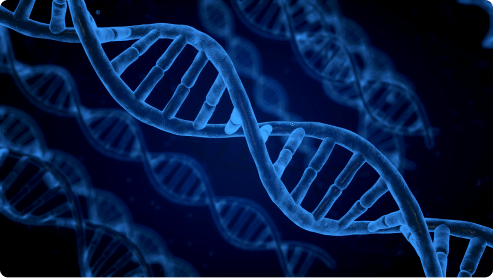Based on Your Reading:
Get Your Free Mesothelioma Guide

Find a Top Mesothelioma Doctor

Access Help Paying for Treatment

Genetic testing for mesothelioma may be important for early cancer detection, treatment and survival rate. Research suggests genetic risk factors, such as a mutated BAP1 gene, increase the likelihood an individual will develop mesothelioma as a result of asbestos exposure.

Written by Karen Selby, RN • Edited By Walter Pacheco • Medically Reviewed By Dr. Jeffrey Velotta
The Mesothelioma Center at Asbestos.com has provided patients and their loved ones the most updated and reliable information on mesothelioma and asbestos exposure since 2006.
Our team of Patient Advocates includes a medical doctor, a registered nurse, health services administrators, veterans, VA-accredited Claims Agents, an oncology patient navigator and hospice care expert. Their combined expertise means we help any mesothelioma patient or loved one through every step of their cancer journey.
More than 30 contributors, including mesothelioma doctors, survivors, health care professionals and other experts, have peer-reviewed our website and written unique research-driven articles to ensure you get the highest-quality medical and health information.
My family has only the highest compliment for the assistance and support that we received from The Mesothelioma Center. This is a staff of compassionate and knowledgeable individuals who respect what your family is experiencing and who go the extra mile to make an unfortunate diagnosis less stressful. Information and assistance were provided by The Mesothelioma Center at no cost to our family.LashawnMesothelioma patient’s daughter


Selby, K. (2024, April 15). Genetic Risk Factors for Mesothelioma. Asbestos.com. Retrieved April 18, 2024, from https://www.asbestos.com/mesothelioma/genetic-factors/
Selby, Karen. "Genetic Risk Factors for Mesothelioma." Asbestos.com, 15 Apr 2024, https://www.asbestos.com/mesothelioma/genetic-factors/.
Selby, Karen. "Genetic Risk Factors for Mesothelioma." Asbestos.com. Last modified April 15, 2024. https://www.asbestos.com/mesothelioma/genetic-factors/.
Genetic risk factors increase the risk of mesothelioma incidence after asbestos exposure. Levels and duration of exposure play significant roles in whether someone develops mesothelioma. Researchers have also found that some people are more susceptible to asbestos-related diseases.
Mesothelioma cases can occur in people after a single exposure to asbestos. The most well-known mesothelioma genetic risk factor is BAP1, a tumor-suppressor gene. Several studies show a BAP1 mutation is a risk factor for mesothelioma. For people with genetic risk factors, prevention techniques are essential.
In 2011, scientists studied the effects of gene mutations as mesothelioma risk factors. They discovered people with a BAP1 gene mutation are susceptible to developing mesothelioma.
Chromosomes are structures your body creates to store DNA. The BAP 1 gene is on the short arm of chromosome three. The study evaluated two U.S. families with high incidences of mesothelioma. Researchers noticed every family member with mesothelioma also carried the BAP1 mutation.
Further research shows the BAP1 mutation occurs in about 70% of mesothelioma cases. Only 20% of cancers correlate with BAP1. This makes the gene a potential target for prevention therapy.
The BAP1 gene regulates a channel that moves calcium inside cells. With gene damage or mutation, calcium levels drop. As this happens, cancer risk is higher from carcinogens such as asbestos.
Mesothelioma disease is not hereditary, but it’s possible to inherit genetic risk factors. A person born with a mutated BAP1 gene has more risk of developing mesothelioma. Asbestos exposure is the leading cause of mesothelioma.
The BAP1 gene mutation can also develop later in life as cells become malignant. Asbestos exposure increases mesothelioma risk in someone with a BAP1 gene mutation.
The National Cancer Institute studied genetic risk and potential solutions in 2019. Senior investigator Dr. Raffit Hassan and his staff studied BAP1 and similar genes.
Hassan believes the study could lead to routine screening exams for prevention.
“This is an important, long-term study that could have implications not only for a patient, but for family members, too,” Hassan said. “Progress can be made in terms of prevention and early detection.”
If doctors locate a BAP1 mutation, they can provide steps to lower mesothelioma risk. Avoiding workplace exposure and tobacco use can decrease the incidence of disease.
Testing for BAP1 requires a blood sample. Positive indicates a mutation, and negative means the gene is normal. It takes an average of two weeks to get results.
Get Your Free Mesothelioma Guide

Find a Top Mesothelioma Doctor

Access Help Paying for Treatment

A 2017 Nature study detailed a common problem with mesothelioma patients. Researchers examined why a person with BAP1 mutations becomes more resistant to chemotherapy. Healthy BAP 1 levels and repaired calcium channels led to positive chemotherapy results.
You cannot fix something unless you know what is broken. We discovered the first, and so far, only known biological mechanism that makes some people more susceptible. We discovered why and how BAP1 mutations cause cancer.Dr. Michele CarboneDirector of thoracic oncology at the University of Hawaii Cancer Center
“The fixed channels should be able to prevent cancer in people who have inherited the mutation. It can also help treat cancers whose tumor cells have developed mutations,” said Carbone.
A 2018 clinical trial studied the immunotherapy drug Lynparza (olaparib). Researchers examined its response rate in pleural and peritoneal mesothelioma.
Lynparza is a protein inhibitor effective against breast and ovarian cancers. It targets the BRCA gene, a close relative to BAP1. Researchers hope for similar results in mesothelioma.
It is difficult for doctors to predict mesothelioma patient life expectancy. Genetic testing may improve estimates of how long someone may survive with mesothelioma.
A 2022 research study noted that DNA could show a patient’s resistance to chemotherapy drugs.
The Proceedings of the National Academy of Sciences looked at mesothelioma in 2019. They studied how DNA repair genes impact mesothelioma survival. Patients with a DNA suppressor gene mutation survived longer than those without.
| With Mutation | Without Mutation |
|---|---|
| 7.9-year median survival | 2.4-year median survival |
BAP1 increases the risk of developing mesothelioma but also improves long-term survival. Research shows they respond better than the average patient. This might mean people with this mutation could receive more aggressive treatment.
A 2022 research study looked at the effects of BAP1 status on survival. About 60% of participants had BAP1 loss. In those patients, median survival after chemo was longer by almost 13 months.

Ongoing studies continue to explore the link between gene mutations and cancer. Researchers hope to learn more about what causes tumors to grow and mutate. Some drugs and treatments can prevent mutations and the spread of cancer.
Researchers in Belgium studied a family with a history of mesothelioma in 2014. Investigators ruled out BAP1 as a cause of mesothelioma in this family. They identified 11 other possible gene mutations.
The most prominent mutation was RBM15. The study could not prove these mutations caused mesothelioma or other cancers.
Many mutations correlate with other cancers. Gaining a better understanding of these mutations allows researchers to personalize treatment further. Several drugs that target those mutations already exist.
A blood protein called High-Mobility Group Box 1 (HMGB1) could improve early detection. A 2016 Clinical Cancer Research study discovered HMGB1 changes in malignant mesothelioma cells.
Researchers found mesothelioma patients have a hyperacetylated isoform of HMGB1 in their blood. People with asbestos exposure have high amounts of non-acetylated HMGB1. Detecting levels of HMGB1 may help recognize populations at high risk.
Your web browser is no longer supported by Microsoft. Update your browser for more security, speed and compatibility.
If you are looking for mesothelioma support, please contact our Patient Advocates at (855) 404-4592
